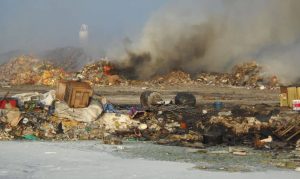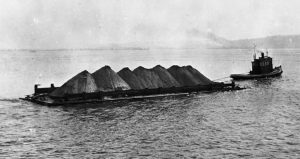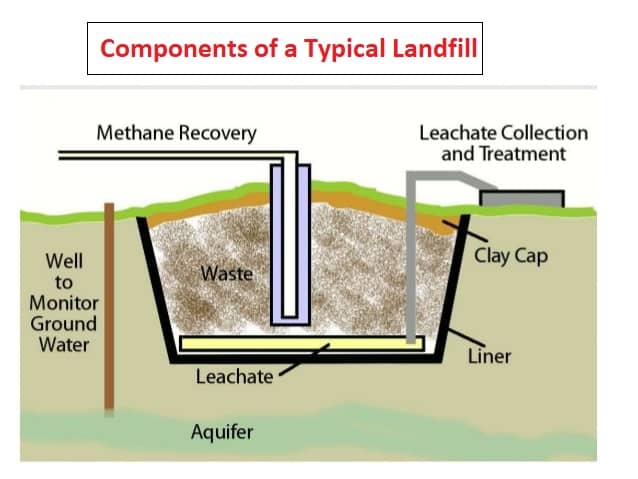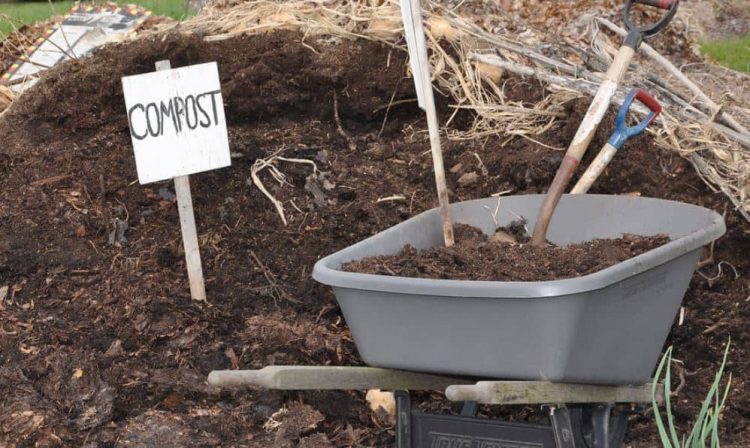Solid Waste Disposal and Management
Improper removal of city strong waste can make unsanitary conditions, and these conditions can prompt contamination of the climate and flare-ups of vector-borne infection. That is, sicknesses spread by rodents and bugs. In this case, methods of solid waste disposal and management are very important.
The assignments of solid waste administration gift advanced and specialized problems. They additionally represent a wide assortment of authoritative, monetary, and social issues that should be overseen and tackled.
Disposal of waste coming from different places like industries, vehicles, hospitals’ unhygienic waste, and household waste leads to many health problems. These diseases are so harmful that they can lead to death. This issue is even more highlighted in developing countries.
Because of an absence of mindfulness and low pay sources, occupants are compelled to live in undesirable and unhygienic conditions. An inappropriate strong waste administration framework may add to the already bad ecological state of the local area. Unlawful unloading of collective strong waste is answerable for issues faced by humans and animals that, in return, disturbs the whole life cycle.
Also Read: Effects of Blasting on Environment
Purpose of Solid waste management
Only a tiny responsibility, along with a planned and properly managed system, can make a big difference.
Methods of solid waste disposal and management are as below:
- Open burning of Solid Waste
- Dumping into Sea
- Sanitary Landfilling of Solid Waste
- Engineered Landfills of Solid Waste
- Components of a Typical Landfill
- MSW Landfill Gas
- Incineration of Solid Waste
- Waste to Energy Combustors
- Composting
- Vermicomposting
- Disposal by ploughing into fields.
- Disposal by hog feeding
- Salvaging
- Fermentation or Biological Digestion
Open burning of Solid Wastes
Open burning is further of two types.
- Residential open burning
- Controlled or supervised open burning
Residential open burning
Private open consumption generally happens because of its straightforwardness and helpless social affair, making it unsafe. This may happen basically outside the home or in places where waste is illegally dropped, like the side of the road or distinctive open public territories.
It is entirely expected to apply any place variety, and the assortment is regularly at its most minimal effectiveness and where assortment locales can be along the walk. This kind of open consumption is uncontrolled, and typically no actions are taken to diminish the wellbeing and ecological effect of the consumption.
Such waste administration rehearses ordinarily is to lessen the amount of waste helpfully and effectively or sometimes to get a good deal on assortment. Such an open consuming. This sort of public consumption can be tough to forestall and quantify because it is unregulated; appraisals of waste consuming and waste consuming outflows can regularly considerably lower than reality subsequently. Open burning in landfills and dumpsites.
Also Read: What are the 8 major types of soil in India?
Controlled or supervised open burning
Unlike Residential burning, this is a method in which burning is carried out in a controlled and manageable way where the negative impacts can be controlled by dispersing fatal gases properly and decrease the harmful effects to a great extent.
Sea Dumping
Sea dumping is a phenomenon in which waste elements are originating from different sources are dumped into the sea or ocean. Waste material from industries, factories house on seashore and waste by the tourists are through into sea.
Moreover, larger sailing ships are used to transfer and export or import oil or diesel, some part of the ocean.
Negative impact
This spillage disturbs the typical environment of the sea. It forms a layer on the water surface that prevents sunlight from entering the water beneath and thus cuts off the sunlight for underwater plants that decreases oxygen supply for marine animals and causes them to die. Components like sulfur, Nickel, and cobalt blocks the fish gills and ultimately cause death.
Sanitary landfills
A Sanitary landfill is a form of planned waste disposal. As solid waste increased, it forced humans to think of a plan that can deal with it in a better way. There came the idea of a sanitary landfill. This idea is not so old.
The concept of sanitary landfills is often confused with open burning, but this is a different phenomenon. It is planned adequately by engineers. One of the essential parts is to select where this landfill should be constructed and operated.
A large portion of land is dug. Its sides and the lower part are covered with plastic or another kind of waterproof material. It prevents the liquid waste from spreading into the surrounding region of the land.
Working of landfill
Waste is filled in the soil in the form of layers. There are alternate layers of soil and debris. After layering, it is adequately covered with the ground ensuring its security.
Components of a typical landfill
Bottom liner: It covers the base of the hole. It is usually a plastic material.
Chambers: Chambers are placing where waste is filled.
Water Drainage system: It is developed so that rainwater can be prevented to enter the landfill.
Leachate collection system: It gathers the polluted water that is created by burning the waste and prevent it from spreading.
Methane collection system: Part of the landfill gathers all the methane gas produced during the burning process.
Cover: It is like a cap. The landfill is completely sealed.
Incineration
In current incinerators, the waste is added to an appropriately planned heater under strongly controlled conditions. The burnable part of the waste joins with oxygen, delivering, for the most part, carbon dioxide, water fume, and warmth.
Burning can reduce un-compacted squander volume by more than 90%, leaving a static buildup of debris, glass, metal, and other vital materials called base debris. The vaporous results of deficient burning, alongside finely partitioned particulate material called fly debris, are conveyed along in the incinerator chimney.
Fly debris includes ashes, residue, and ash. To eliminate fly debris and vaporous results before they are depleted into the environment, we should add some outstanding features to current incinerators. Bottom debris and fly debris are typically joined and discarded in a landfill.
If the debris is found to contain poisonous metals, it should be overseen as an unsafe waste. The temperature in incinerators ranges from 900-1000° C.
Current incinerators are typically worked with a rectangular heater. Heaters are developed blocks that can withstand high ignition temperatures. Ignition in a heater happens in two phases: essential and additional. In optional ignition, the excess unburned gases and particulates are oxidized.
To give sufficient oxygen to both essential and optional ignition, air should be altogether blended with the consuming denial. Air is provided from openings underneath the meshes or is conceded to the zone above.
The plant administrator should control this underfired air and overfire air to accomplish great burning effectiveness. A constant air progression can be kept up by a characteristic draft in a tall fireplace or by mechanical constrained draft fans.
Side Effects
Adverse effects of Incinerators include Noise pollution, smell, air pollution.
It has no helpful by-product.
Composting
Composting is defined as a process of garbage removal where natural waste typically deteriorates under oxygen-rich conditions. Although all organic products will slowly dispose of, certain waste things are viewed as compostable and should be added to compost compartments. Food material, for example, banana strips, eggshells are extraordinary things to compost. We should strictly avoid meat products to compost because it can affiliate animals and gives a stinking smell.
Yard waste, for example, grass clippings and leaves, can likewise be added to compost holders. These things will help increment disintegration and help lessen scent as materials separate. Again, with family food squander. We should prefer avoiding some yard waste since they will develop back and spread.
When these waste things are set in a heap, the fertilizing soil cycle can begin. The natural materials are separated usually by worms, microorganisms, and different living beings that live in the soil. Albeit treating the soil cycle can happen with no further human contribution, most fertilizing the ground includes the expansion of water and oxygen – which happens by turning the manure – to accelerate the general interaction. When all the natural material is separated, the outcome is made and is regularly regarded as humus.
Types of Composting
- Mechanical Composting
- Vermicomposting
- Aerobic composting
- Anaerobic Composting
Advantages of Composting
It reduces the amount of waste we through into a landfill for decomposition.
The final product is high in nutrients and nitrogen; hence can be used as fertilizer.
It will reduce the cost of fertilizers.
Vermicomposting
Vermicomposting is composting. Red worms in bins feed on food scraps, yard decorations, and other natural makes a difference to make manure. The worms separate this material into excellent fertilizer called castings. Worm containers are not challenging to develop and are likewise accessible.
One pound of developed worms can eat up to a large portion of a pound of natural material each day. The receptacles can be measured to coordinate with the volume of food scraps that will be transformed into castings.
It ordinarily takes three to four months to deliver usable castings. The castings can be utilized as gardening soil. The other side-effect of vermicomposting, known as “worm tea” is being used as a great fluid compost for houseplants or nurseries.
Disposal by ploughing into fields.
Organic waste has a lot of benefits in agricultural fields. From ancient times this phenomenon is being used by farmers to enhance the fertility of the soil.
Dung waste of the animals is added to the area, ploughed, and adequately mixed with soil. It eventually becomes part of the earth and provides essential nutrients required for the growth of crops.
- It helps dispose of waste successfully.
- Decreases the cost of fertilizers.
Disposal by hog feeding
Hog is an animal, a domestic pig. Hog feeding is also considered an effective of disposing of waste material. Hogs eat various food; therefore, organic waste from the kitchen, yards, and grocery stores is disposed of by hog feeding. As the other disposal methods are expensive and require a more significant deal of attention, hog feeding is given preference and importance.
Salvaging
Salvaging is described as an observed collection of solid waste for reuse. Salvaging is considered an advanced way of solid waste management. Salvaged material should be treated with care and should be avoided to mix with surrounding materials. Salvaged material is then reused by passing through different stages of recycling.
Fermentation or Biological Digestion
Fermentation stands for the chemical breakdown of a substance by microbes, yeasts, or different microorganisms, typically including foam and the emitting of warmth.
Types of Fermentation
- Aerobic Fermentation
- Anaerobic Fermentation
Anaerobic Fermentation
Anaerobic fermentation is carried out without oxygen. The natural part of the waste and other effectively biodegradable strong substrates must be advantageously treated to lessen their ecological effect and to regenerate energy and material. A concise decision to accomplish this objective is given by the anaerobic fermentation measures for methane production.
However, anaerobic strong state fermentative cycles can be utilized for the creation of significant products. Anaerobic fermentation is a compelling bioprocess for the creation of unstable unsaturated fats and another low-weight natural accumulates, for example, alcohols or lactic acid.
These would then be utilized to create methyl-and ethyl-esters to be added to gasoline on account of their high-octane number. Biogas can be made while treating natural and organic waste with high biodegradability.
Aerobic Fermentation
Aerobic fermentation takes place in oxygen and usually is more limited and more extraordinary interaction than anaerobic aging. Oxygen is necessary for the growth of microorganisms. In some cases, oxygen is provided at the start to better develop microorganisms, and the rest process is carried without oxygen.
Also Read: A complete information about sand
Conclusion
Unique methods are available for managing waste material not only on a local level but also global level. But all these things should be handled with care and precautions, specifically processes like incineration and fermentation or biological decay.
Still, Do Have a Question? Ask a Question and Get an Instant Answer









Leave a comment